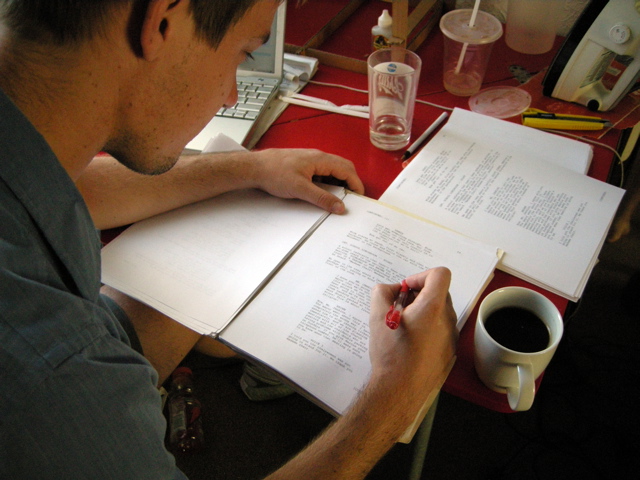Writing, which has been romanticized as a solitary pursuit, is often undertaken by teams in the case of filmed entertainment. There is a tug of war inherent to any collaborative process. In order for the process to work, however, neither side can be dragged through the mud pit in the middle.
The collaborative process can work in many ways. Earlier this year I spent time interviewing a number of rock bands. Some wrote all music collaboratively. Others depended on one member to write the songs while other members focused on their individual instruments and play. Still, inherent in all of those conversations was the recognition that some mysterious element was also necessarily at stake for all parties in order to keep the process engaged. One musician described band practice as, “where we all go into a room together to hate each other for three hours so we can come out again and be friends.” At its best, creative work is both difficult and rewarding.
Co-writing is a new sort of collaborative process for me. Though I have collaborated on creative projects many times, and across many media, the process of shaping an object built upon the written word offers a number of challenges specific to the medium. The first challenge is the conceptual level of the story: what the story should be and why it should be told. From there, the laboratory work begins.
The process has worked, for the most part, with the assumption that everything is up for debate or challenge. There should be no assumptions about the quality of a particular scene or its value in making a particular point. Rather, if the goals are clear-cut from the beginning, then each scene is a support structure for making a particular point apparent to the reader. The challenge lies in figuring out how to make each particular scene the best vessel to convey the reader towards the final goal. In that sense, each scene, action, or line of dialogue is infinitely replaceable so long as the thing that takes its place is more capable of bringing the reader a broader appreciation of the thesis.
The two axes of such an endeavor are epitomized by the two minds that must reside in any architect: the cartoonist and the engineer. a) What is the most outrageous shape that I can put here? b) Will it stand? In the case of co-writing, more than one mind is almost certain to provide a ballast for the most outlandish and unstable ideas, it is the other question that is more challenging: can two minds imagine and agree upon the same creative risks?
We see an empty iced coffee, a near-empty glass of water and an empty bottle of gatorade on the floor in the above photograph. We also see a near-full cup of coffee and an iron, for good measure. Rocket fuel, sustenance, and clutter. The process demands no less.


